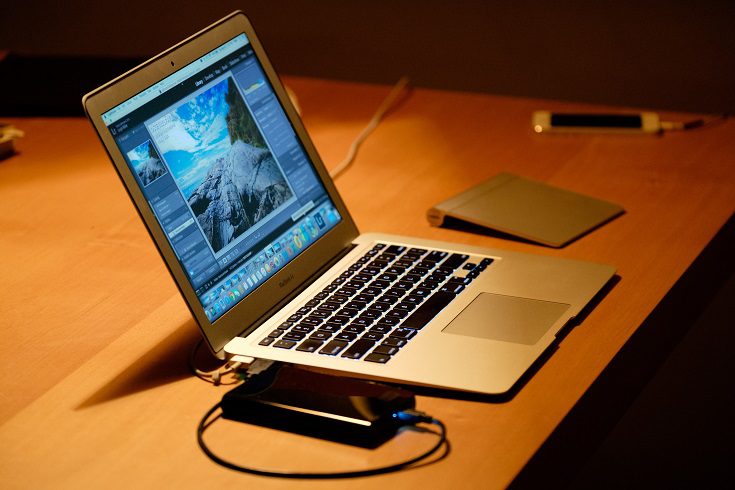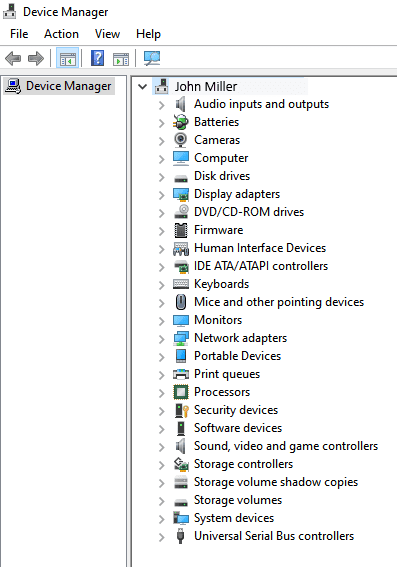There are quite a number of common reasons why your Windows PC will crash.
nanadwumor

- Hardware Conflict
- Bad RAM
- BIOS Settings
- Hard Disk Drives
- Viruses
RECOMMENDED ARTICLES
Do You Gain or Lose Anything From Using Ad Blockers?
Ad blockers aren’t perfect, but they shield you from fraud and hidden trackers Blocking ads can reduce creator revenue Some ad blockers allow selective ads Check ad blocker privacy policies...
How To Block Companies like TikTok, Facebook etc From Tracking You
Companies like TikTok and Facebook can track you even if you don't have an account with them. Tracker-centric extension with adaptive blocking Two methods: shared updates or optional personal...
Never Keep Screenshots of Private Information on Your Phone Again
Spyware could be sneaking through your photo gallery to steal private information. Avoid storing passwords, crypto keys, or sensitive info in photo galleries Use password managers and keep...
We all experience it at least once in our lifetime. Isn’t it? You are using Microsoft Windows and suddenly everything stops and you’re are hit in the face with a message that looks like this:
Your device ran into a problem and needs to restart. We’re just collecting some error info, and then we’ll restart for you.
0% complete
This is what is commonly known as the Blue Screen of Death. Well, that is a very excruciating experience and you don’t want to experience this problem, not even once.
In this tutorial, we look at the top 5 reasons your computer may crash and how to avert these occurrences.
Hardware Conflict
One of the foremost reasons why your Windows PC crashes is because of hardware conflict.
Each PC hardware device communicates to other devices through a channel called the Interrupt Request (IRQ).
These channels must be unique for every device. An Interrupt Request (IRQ) is a signal that is sent to a computer’s processor to momentarily stop (or interrupt) its operations.
This IRQ signal usually sent to a computer hardware device so as to interrupt the computer’s processor in order to allow the device some time to execute its own operation.
For example, a printer usually connects internally using IRQ 7 channel. The keyboard also usually uses IRQ 1 while floppy disk drives make use of IRQ 6. As you can see, each device tries to take over a single or unique IRQ without interfering with the other.
Imagine a scenario where there are a lot of devices, especially if they are not properly installed.
A situation may occur where such badly installed devices, say two devices, may try to share the same IRQ number.
This may not be realized if these ‘siamese divices’ are not used simultaneously. But in a situation where you decide to use both devices at the same time, a crash can occur due to the use of a single IRQ by two hardware devices.
To ensure that this does not happen to your PC, there is a way to examine your machine for such possible occurrence.
Step 1: Press on the Windows Button on the Keyboard and X.
This should bring up a dialog box with several options.
Step 2: Select Device Manager.


You will usually see a yellow ‘!’ next to the device’s description in the Device Manager if it has a problem.
If a device has a problem, check the IRQ numbers to see if any of them appears twice. If any appears twice, two devices may be using it.
Step 1: Clcik View under Device Manager.
Step 2: Select Resources by Connection.
Step 3: Click the Interrupt Request (IRQ) drop down arrow to show all IRQs.
Sometimes a device might share an IRQ with something described as ‘IRQ holder for PCI steering’. This can be ignored. The recommended way to fix this problem is to remove the problem device and reinstall it.
In certain instances, you may have to find updated drivers on the internet to make the device work properly. One famous resource for PC drivers is www.driverguide.com. However, if the device is, say, a soundcard, or a modem, it can often be fixed by moving it to a different slot on the motherboard.
Caution: When working inside a computer, make sure to switch it off, unplug the mains lead and touch an unpainted metal surface to discharge any static electricity.
And do note that opening your computer may void the warranty.
Bad RAM
RAM (Random-Access Memory) problems might be blame for the blue screen of death. The message may indicate that the problem is fatal. A fatal error indicates a serious hardware problem. At times, this may mean that a hardware part is damaged and will need replacing.
But if the fatal error was caused by RAM, then this might be due to mismatch of chips. For example, mixing 70-nanosecond (70ns) RAM with 60ns RAM will usually force the computer to run all the RAM at the slower speed. This will normally crash the machine if the RAM is overworked.
One approach to rectify this problem is to enter the BIOS settings and increase the wait state of the RAM. This can make it more stable.
Alternatively, you can troubleshoot a suspected RAM by rearranging the RAM chips on the motherboard, or take some of them out.
Then try to repeat the processws that caused the crash. When handling RAM, try not to touch the gold connections, as they can be easily be damaged.
Parity error messages also refer to RAM. Modern RAM chips are either parity (ECC) or non parity (non-ECC). It is recommended that you don’t mix the two types. This can cause problems.
BIOS settings
Every motherboard has a range of chipset settings. These are decided in the factory. A common way to access these settings is to press the F2 or delete button during the first few seconds of a boot-up.
Once inside the BIOS, great care should be taken. It is recommended to write down on a piece of paper all the settings that appear on the screen. That way, if you change something and the computer becomes more unstable, you will know the default settings to restore.
One common BIOS error is the CAS latency. This refers to the RAM. Older EDO (extended data out) RAM has a CAS latency of 3. Newer SDRAM has a CAS latency of 2. If you set the wrong figure, this can cause the RAM to lock up and freeze the computer’s display.
Microsoft Windows is better at allocating IRQ numbers than any BIOS. If possible, set the IRQ numbers to Auto in the BIOS. This allows Windows to allocate the IRQ numbers.
Make sure the BIOS setting for Plug and Play OS is switched to ‘yes’ to allow Windows to do this.
Hard Disk Drives
Your hard disk drive begins to fragment after some time. It is recommended that you defragment the hard disk every week or so, to prevent it from causing a screen freeze.
Step 1: Open Disk Defragmenter by clicking the Start button 

Step 2: Under Current status, select the disk you wish to defragment.
Step 3: If you want to determine if the disk needs to be defragmented or not, click Analyze disk.
Windows will analyze the disk to find out if need be to fragment it. Once it is finished analyzing the disk, you can check the percentage of fragmentation on the disk in the Last Run column. If the exceeds 10%, you should consider defragmenting the disk.
Step 4: Click Defragment disk.
If you’re prompted for an administrator password or confirmation, type the password or provide confirmation.
Aslo, Hard disks slow down and may crash if they are full. Free some space on your hard disk if full.
Empty the Recycle Bin every week to free more space.
Viruses
Well, we are not talking about human viruses. These are computer viruses. They are malicious programs or codes that infest the PC and other programs.
Viruses cause instability. Some viruses erase the boot sector of a hard drive, making it impossible to start. This explains why it is recommended to create a Windows start-up disk.
Use antivirus software or a virus scanner to scan your PC for potential viruses or malicious code. A virus scanner requires a list of virus signatures in order to be able to identify viruses. These signatures are stored in a DAT file. Antiviruses should be updated from time to time to in order to arrest current virus signatures.
Join Our Telegram Group
Join Our WhatSapp Group
You May Also Like…
Do You Gain or Lose Anything From Using Ad Blockers?
Ad blockers aren’t perfect, but they shield you from fraud and hidden trackers [Sassy_Social_Share...
How To Block Companies like TikTok, Facebook etc From Tracking You
Companies like TikTok and Facebook can track you even if you don't have an account with...
Never Keep Screenshots of Private Information on Your Phone Again
Spyware could be sneaking through your photo gallery to steal private...



0 Comments